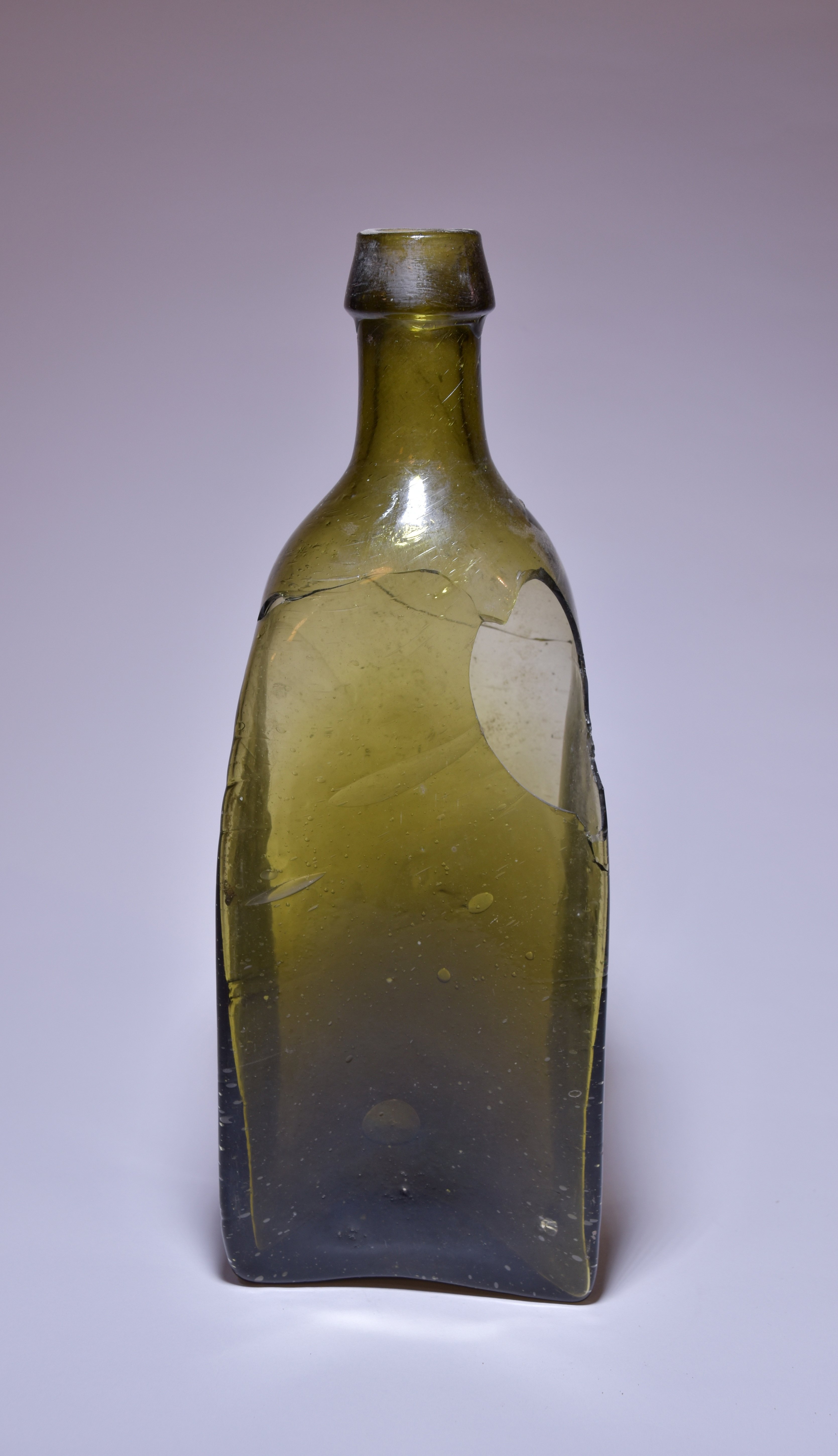Im Querschnitt rechteckige Flasche aus grünem, blasigem Glas, Boden mit rundem Abriss, drei konkav geformte Seiten, eine plan, die nach oben leicht konisch zulaufen und einen sanften Übergang in den kurzen Hals haben, die Form insgesamt etwas geneigt, Mündungsrand breit abgesetzt und oben flach; Ausbruch auf Höhe der Schulter, die Flasche auf dieser Höhe in zwei Teile zerbrochen, korrodiert.
Die Flasche gelangte 2022 als Schenkung eines Rheinsberger Antiquitätenhändlers in den Bestand. Ihre Herkunft ist nicht dokumentiert, sie soll aus einem Tauchfund stammen, vielleicht aus dem Dagowsee. Dieser Flaschentyp ist aus der Literatur bekannt (Friese, Glashütten in Brandenburg, 1992, Tafel 16). Er stammt aus der Globsower Glashütte und datiert ins ausgehende 19. Jahrhundert. [Verena Wasmuth]
en

